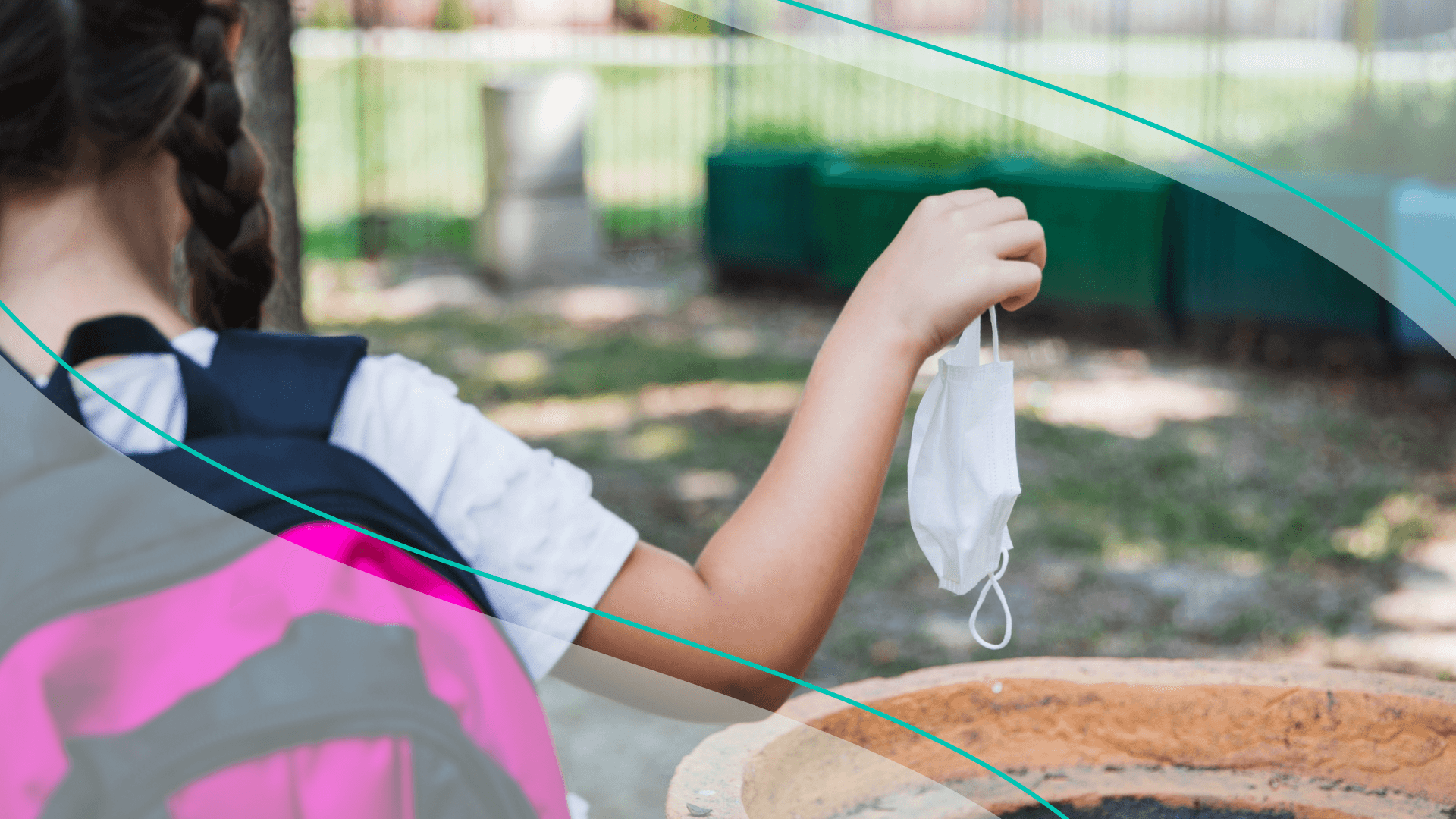For the 2022-2023 school year, the CDC updated its COVID-19 guidelines. It changed what we had all been used to for years: quarantining, contact tracing, and social distancing. The CDC also added recommendations around vaccines for students. All of this has helped make the school year the most "normal" since the start of the pandemic. To give you all the info you need to keep your kid(s) safe in school, we rounded up what the CDC suggests. (Worth noting that schools are not required to follow these).
CDC recommendations for the COVID-19 vaccine
Kids as young as 6 months old are eligible for the Pfizer and Moderna COVID-19 vaccine. The CDC has reiterated that the shots protect people against serious illness, hospitalization, and death. While about 69.4% of the US population is fully vaccinated against COVID-19 (and 16.4% of the population have received a bivalent booster), rates are much lower in children. (Reminder: The CDC’s definition of fully vaccinated is 14 days after a single-dose COVID vaccine or 14 days after their second dose of a two-shot regimen.) The agency also recommends that some older kids and adults also get boosters, too.
In October 2022, a CDC committee voted to include the COVID vaccine in the recommended immunization schedules starting in early 2023. That means the COVID vaccine will be on the list with other recommended vaccines like measles, varicella, hepatitis A, and more. Important note: That doesn’t mean there’s a COVID vaccine mandate in schools. That’s determined by state or local jurisdictions. If you’re unsure, you can call your kid’s school to find out.
CDC mask guidelines for COVID-19
The CDC says everyone (vaccinated or not) 2 and older should still wear a well-fitting mask (preferably N95s or KN95s) in indoor spaces when the local COVID-19 levels are high.
The reality is, most US schools are mask-optional, with only about 2% of the top 500 school districts reportedly requiring masks in schools. At the end of the day, deciding whether your kid should wear a mask at school is a personal choice.
CDC quarantine guidelines if your kid is exposed to COVID
If your kid is exposed to COVID, they don’t need to quarantine — regardless of their vaccination status. Instead, the CDC recommends people mask up for 10 days and get tested five days after they were exposed.
The CDC also says schools no longer need to “test-to-stay.” That approach allowed students who were close contacts of someone who tested positive to avoid quarantine (and stay in-person) as long as they had no symptoms and tested negative.
When can my child return to school after a positive covid test result?
The CDC recommends they quarantine for at least five days even if they’re vaccinated. If after five days your child is fever-free for 24 hours and symptoms are improving, they can stop quarantining. Meaning, freedom on day six. They should have two negative tests 48 hours apart before going out in public again without a mask or back to school. The guidance recommends people take their first test on day six of isolation if they don’t have fevers.
The FDA recommends you take multiple tests if using at-home antigen tests to avoid a ‘false negative.’ Here’s a pro tip: You can order a third round of free at-home tests from the gov. Plus, most insurance companies will cover at-homes tests (either up front or by reimbursement).
CDC guidelines for asymptomatic testing
The CDC also no longer recommends that asymptomatic people get tested regularly. Instead, they suggest schools at high community levels consider testing students and staff involved in “high-risk activities” like close contact sports, band, choir, and theater.
theSkimm
Since its first guidance in 2020, the CDC loosened COVID-19 guidelines that could change the way schools handle quarantines and testing. School leaders ultimately decide if they want to follow these suggestions. While some parents may be celebrating the end of quarantines and class disruptions, others may be concerned about high case counts and low vaccination rates in kids.
Updated on Mar. 27 to reflect new information.
This content is for informational and educational purposes only. It does not constitute a medical opinion, medical advice, or diagnosis or treatment of any particular condition.
Live Smarter
Sign up for the Daily Skimm email newsletter. Delivered to your inbox every morning and prepares you for your day in minutes.
